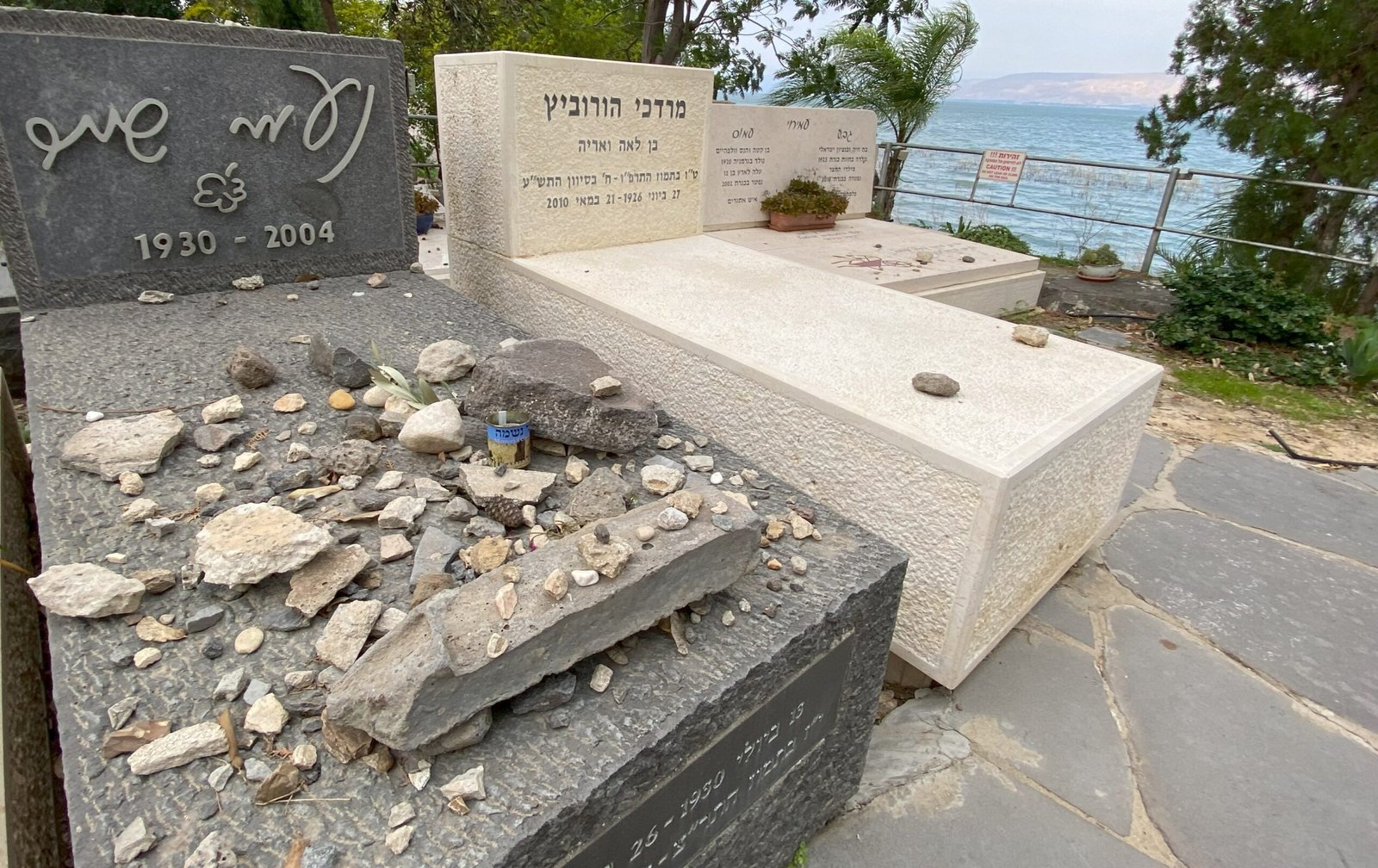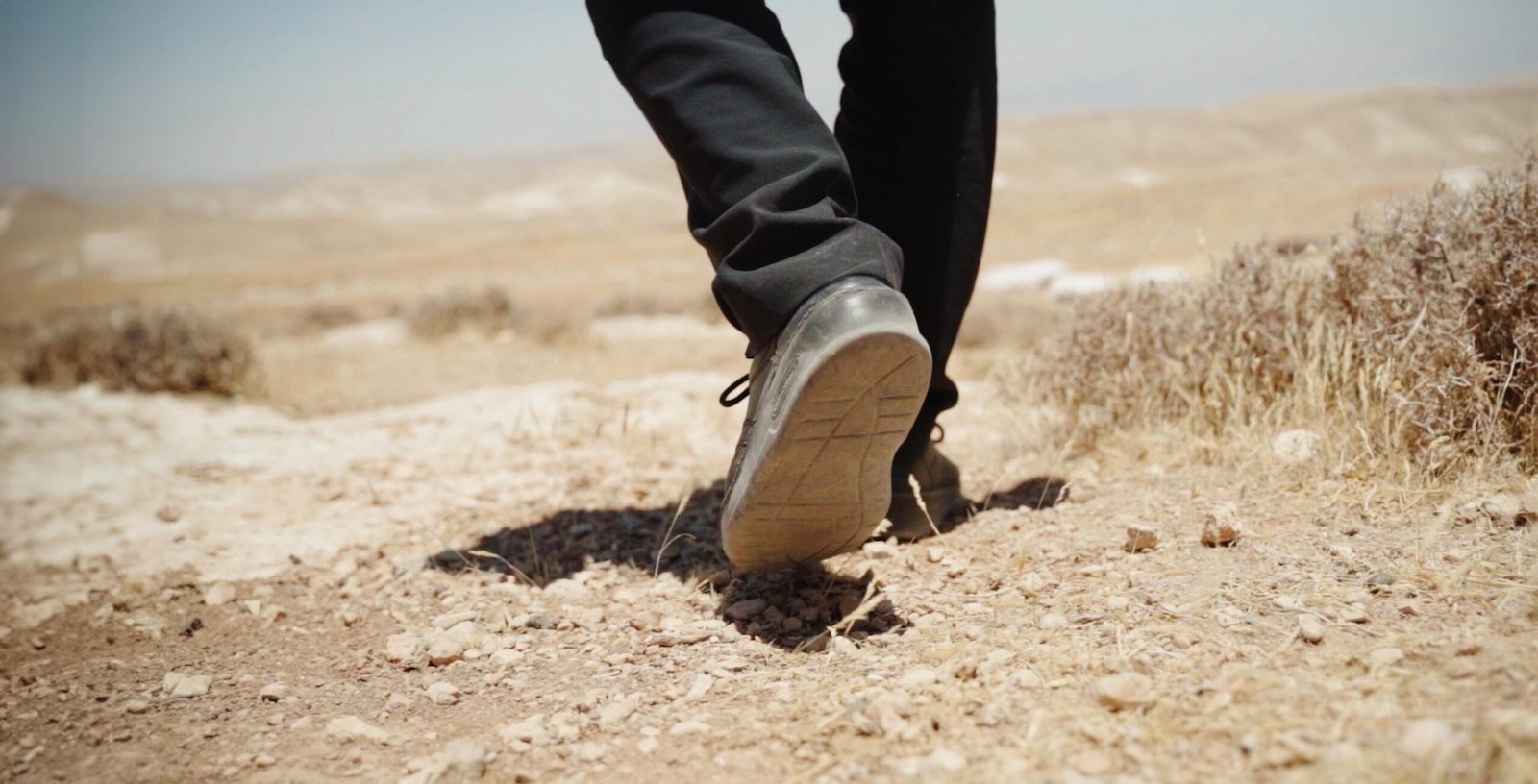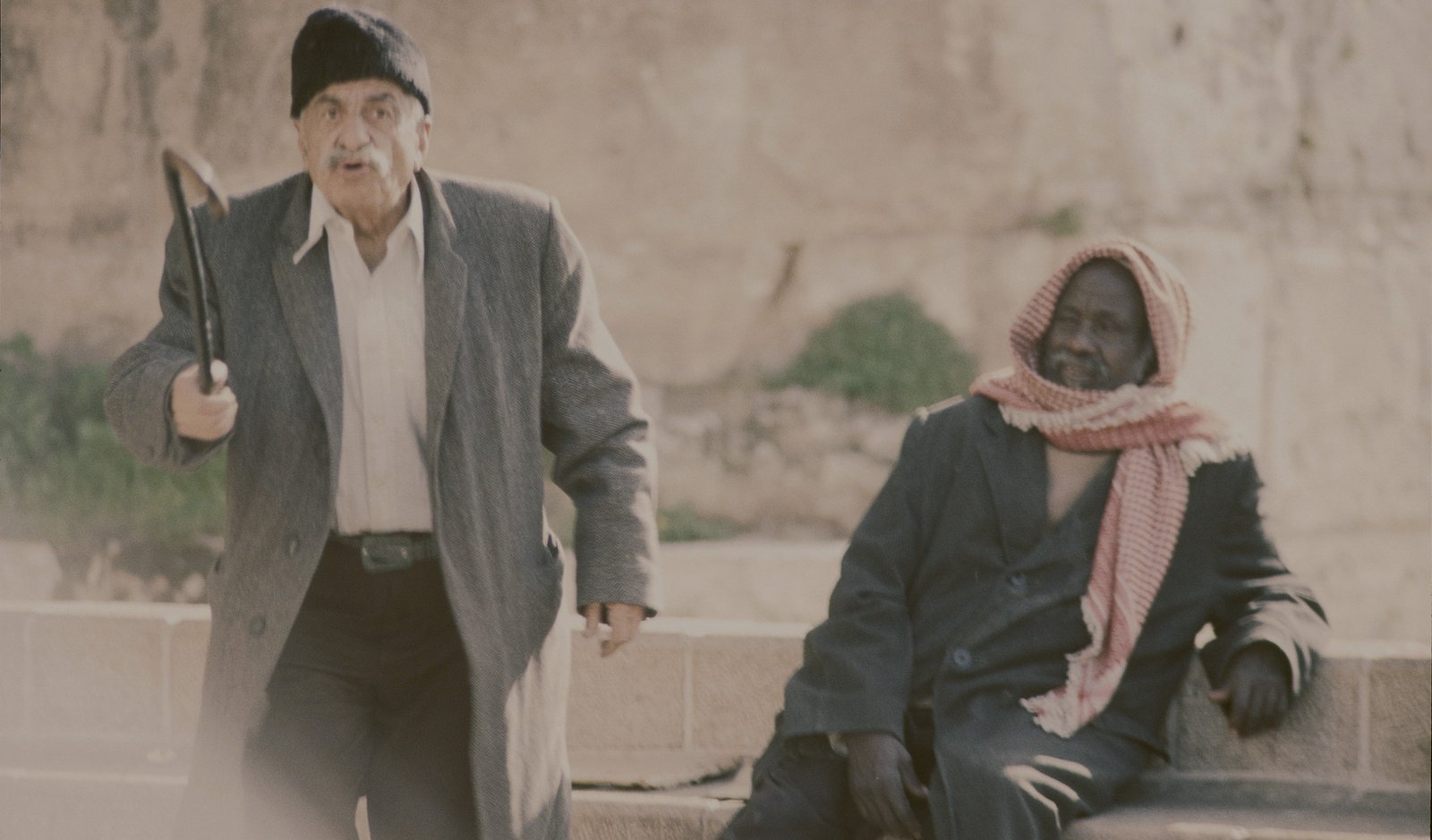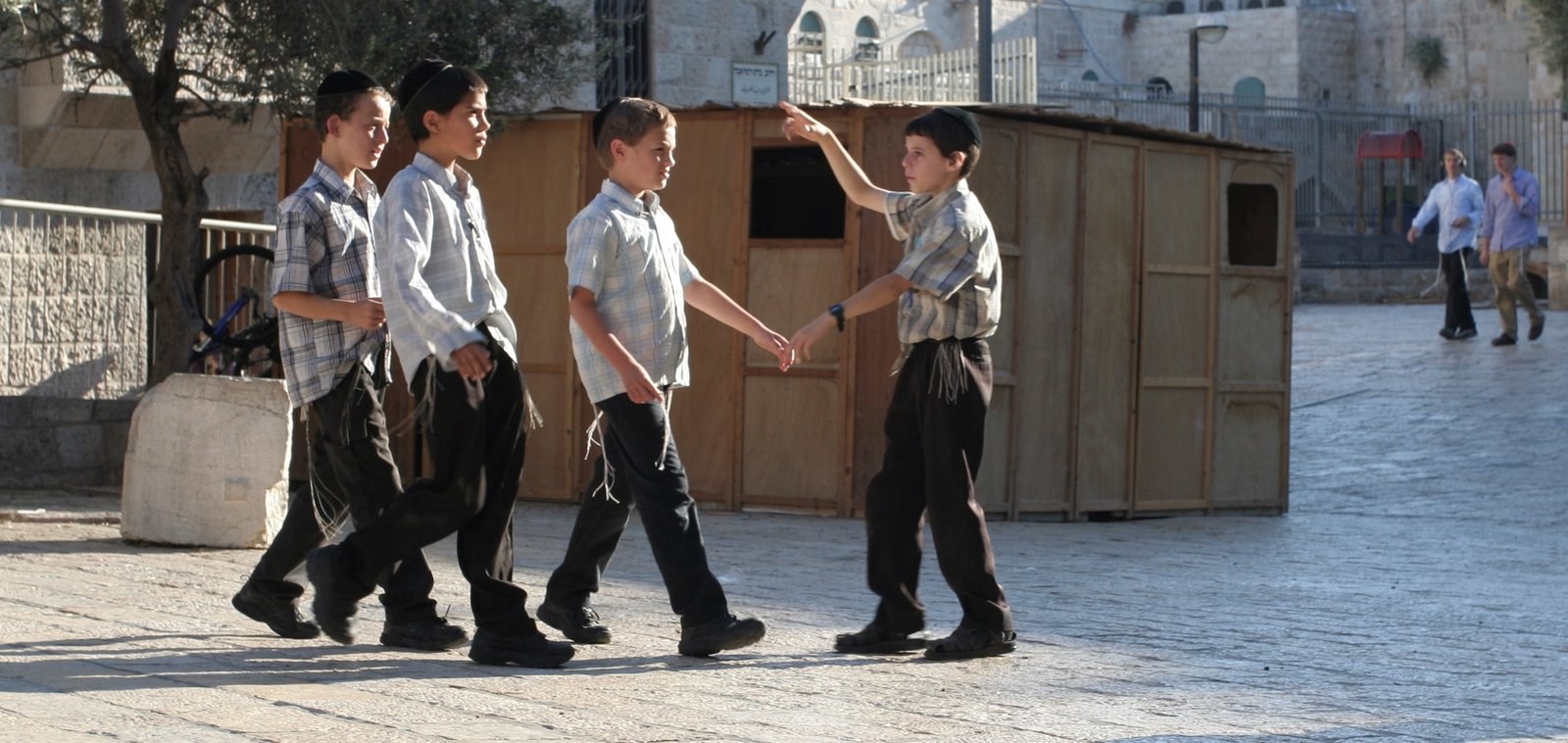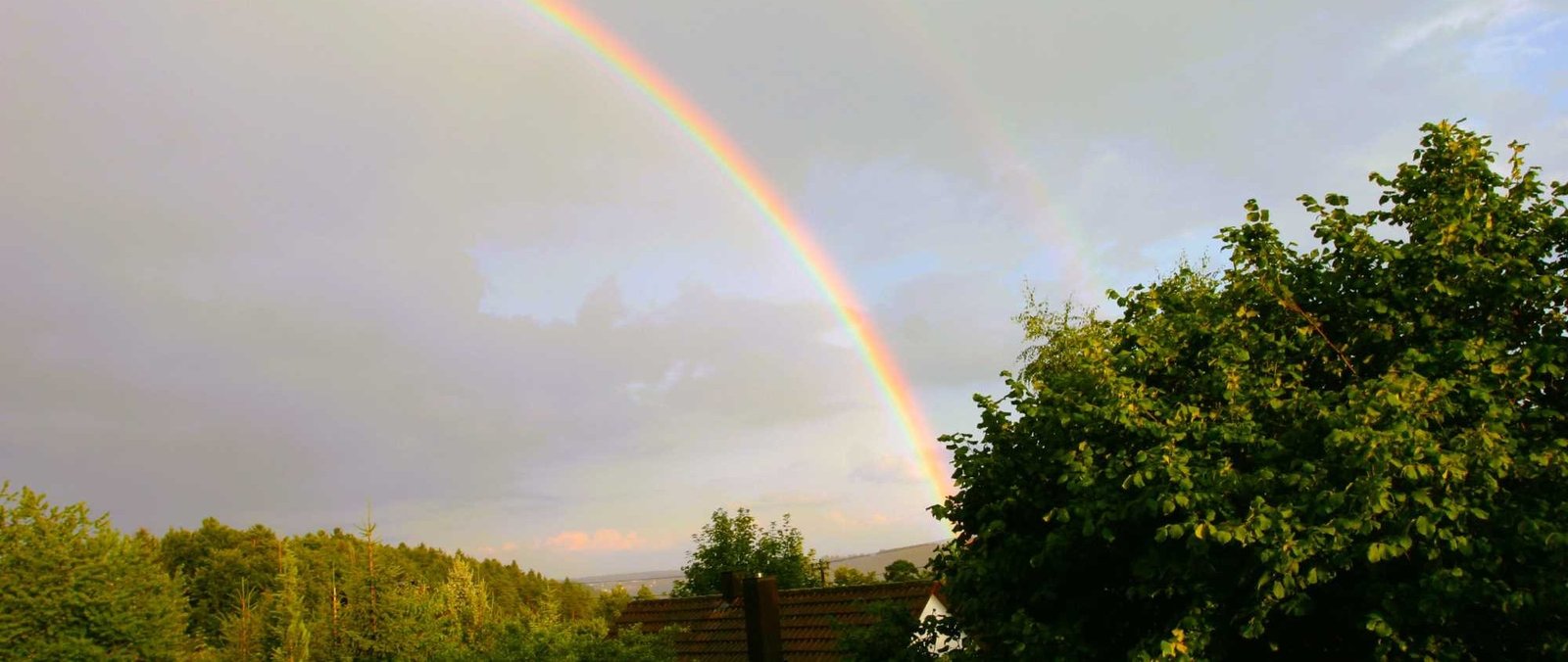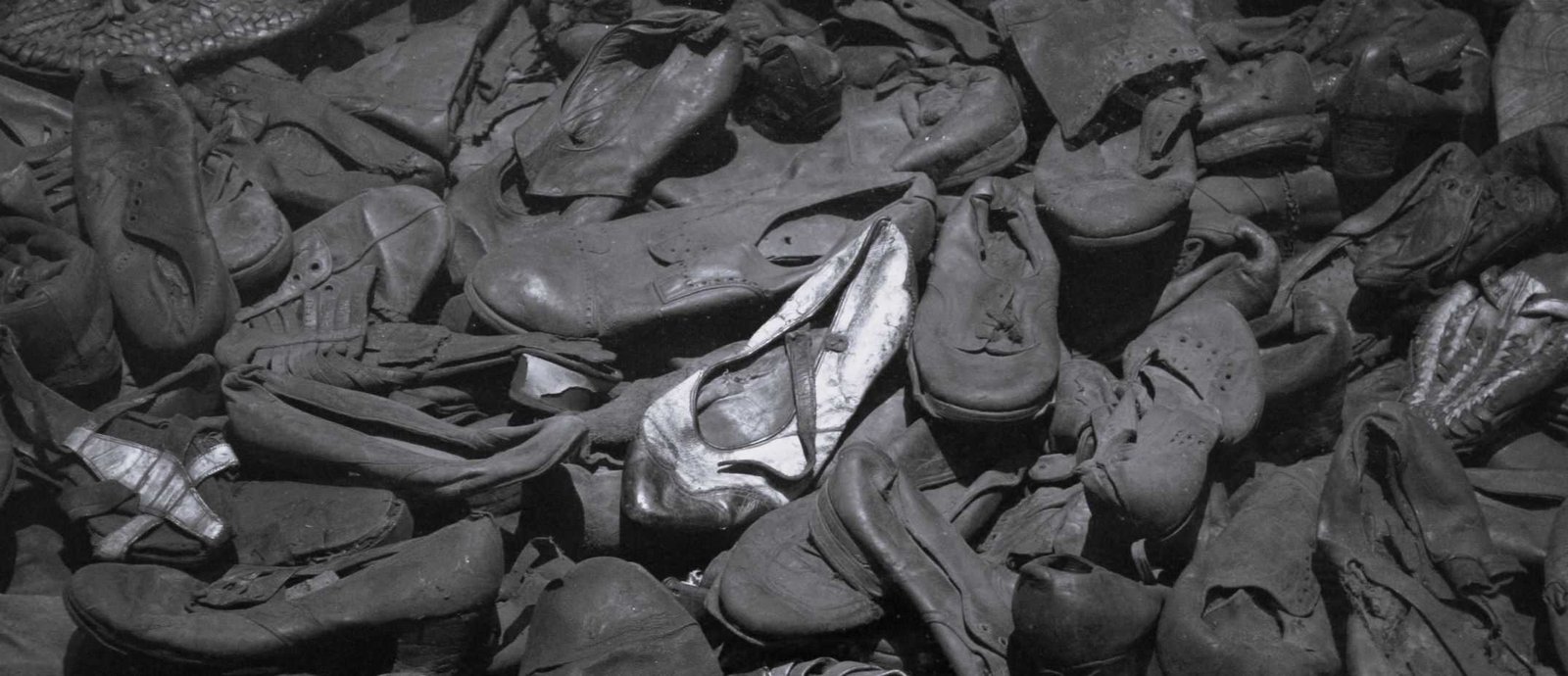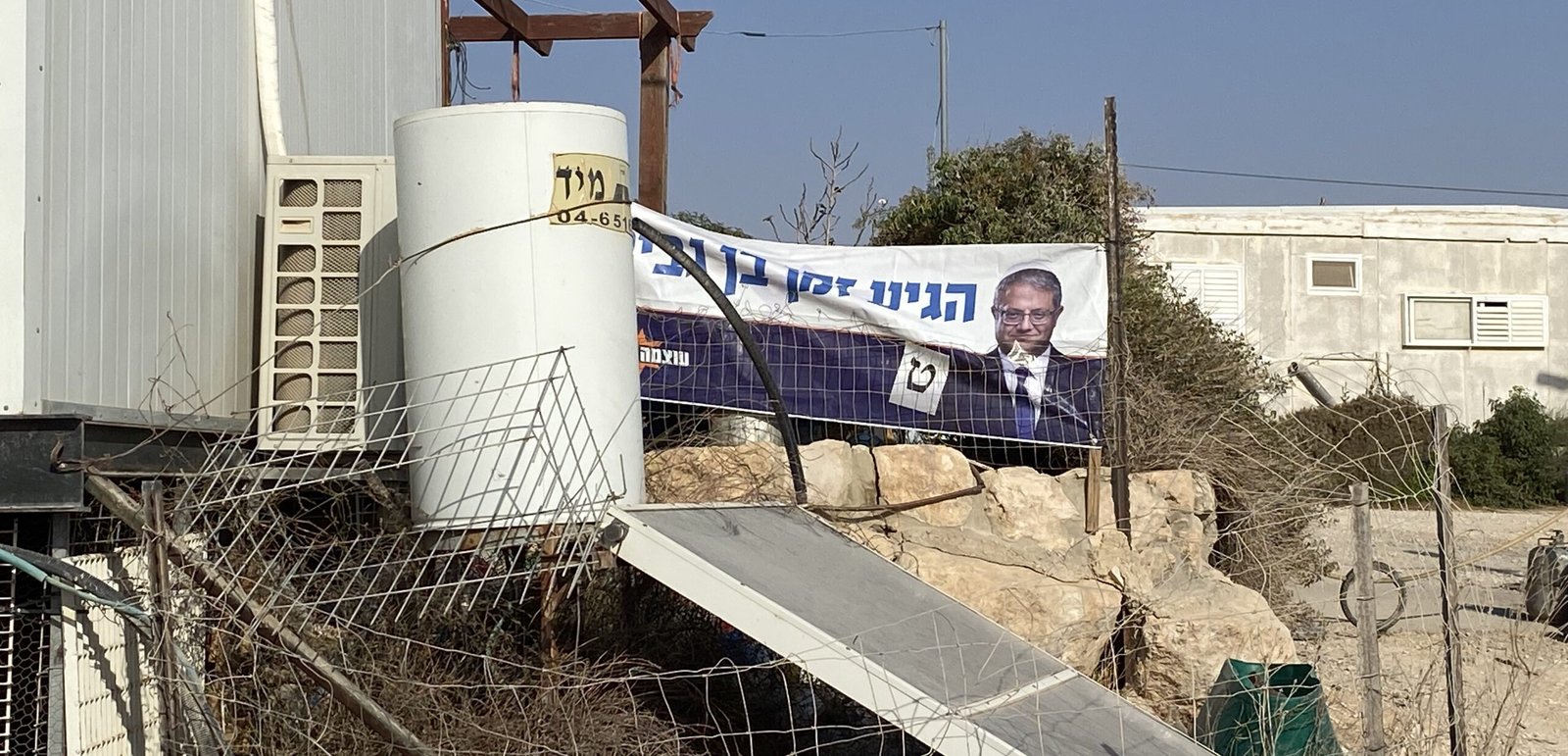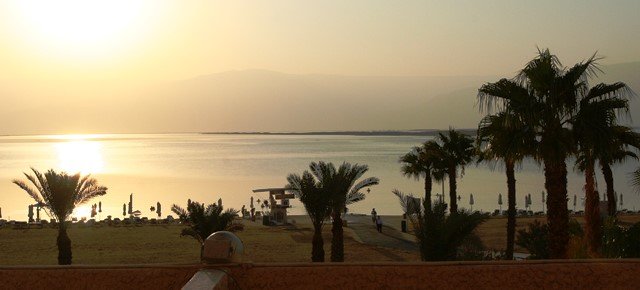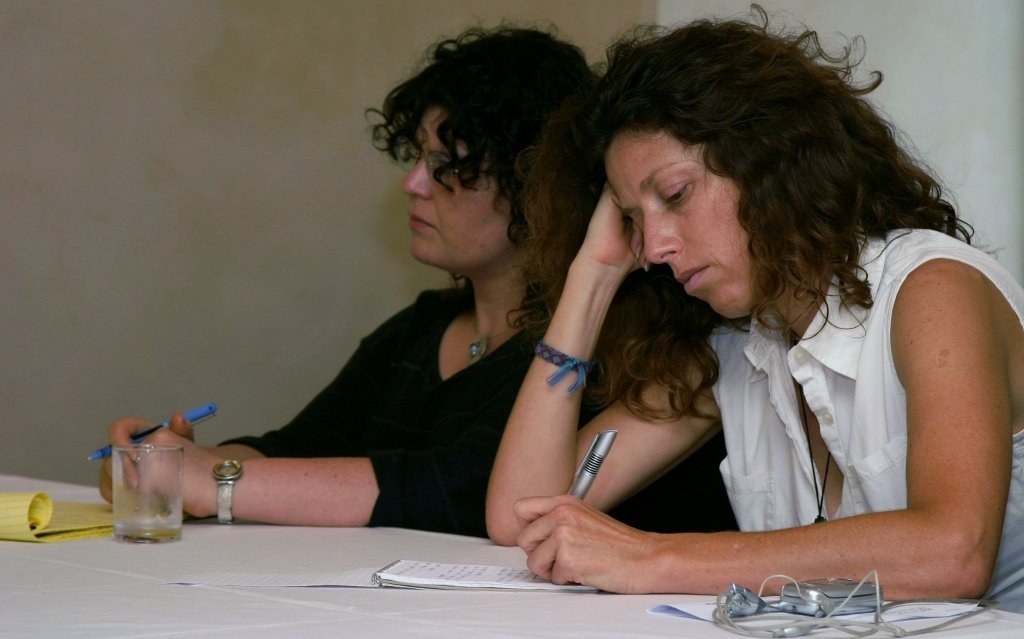Share This Story, Choose Your Platform!
A man who murmurs in the Torah of the Lord day and night, until it becomes “his own Torah,” may seem unworldly. But actually he is firmly rooted, “like a tree transplanted to streams of water” (Psalms 1:3).
On “Tu BiShevat”, the 15th day of the Hebrew month of Shevat, Jewish people in Israel celebrate the so-called “New Year of Trees” right in the middle of the rainy season. Everywhere in the country new trees are being planted. During this time, Deuteronomy 20:19 may be heard quite often quoted: “Man is a tree of the field.”
The original context of this statement emphasizes that the existence of a man is fundamentally dependent on the well-being of the fruit trees in his environment.[1] Therefore, fruit trees should be spared during the siege of a city. Only trees that are not used for food production may be felled and used for military purposes (compare Deuteronomy 20:19-20).
The Hebrew wording, however, also allows for the interpretation that man here is compared or even equated with a tree of the field. In fact, Scripture in many instances compares human beings with trees and their fruits.[2] Thus, the fact that the author of Psalm 1 does exactly this in verse 3 is not extraordinary.
Torn out and transplanted
Now the psalmist states about this tree that it is “planted”. Jewish exegetes observe right away that the Hebrew word for “planted” is not “נטוע/natua’” but “שתול/shatul”. They are aware that “שתול/shatul” – in contrast to “נטוע/natua’” – is the planting of a tree after it has been previously torn out.[3]
The man who is compared in this instance to a tree, was therefore torn out in one place and planted in another place, so as to improve his conditions and to refine him. In order to capture this subtle difference in the Hebrew language, Psalms 1:3 must be translated: “He is like a tree transplanted to streams of water…”
By your own effort…
Samson Raphael Hirsch[4] observes that the Biblical-Hebrew word root “שתל/shatal”, from which “שתול/shatul” is derived, appears to be phonetically related to the Rabbinic word “שדל/shadal”. “שדל/shadal” means “to influence, to persuade, to convince” and “is the expression of earnest endeavor.”
Hirsch concludes that the lover of the Torah in Psalm 1 “draws nourishment for the development of his mind and character, not from the environment in which he happens to find himself by accident of birth or circumstances, but after serious deliberation he implants himself at the Source, where he can develop so as to assure for himself prosperity and welfare.”[5]
Radak[6] argues from the closer literary context of Psalm 1. He emphasizes that the grammatically passive form of “being transplanted” has something to do with one’s own decision, effort, and ultimately human responsibility: “The man who avoids evil and does good is like a tree transplanted to streams of water.”
David Altschuler[7] refers in his commentary Metzudat David to Psalm 92. There, the righteous man is compared to a palm tree and a cedar in Lebanon (verse 13), to explicate then: “They are transplanted (שְׁתוּלִים/shetulim) into the house of the Lord, in the courts of our God they flourish” (verse 14).
Nobody got into the house of the Lord accidentally, naturally or even by coincidence. Anyone who is rooted in the house of the Lord has been specifically transplanted there. He has deliberately committed himself there.
This was the case, for example, with the twelve-year-old Jesus. For days his worried parents had been looking for him. When they finally found him in the temple in Jerusalem, he asks: “How come you are looking for me? Do not you know that I have to be in what belongs to my Father?” (Luke 2:49).
The Malbim[8] also writes with reference to Psalm 92:14: “For the evil one, this world is home, the place where he is planted [נטוע/natua’]. The righteous person, in contrast, has been torn out from this world and its terror, and transplanted [שותל/shatul] himself to the higher streams of water.”
…or without your own intervention?
Martin Luther argues in exactly the same line of thought. In contrast to the rabbinic interpreters, however, he puts the emphasis not so much on the human decision and effort, but on the action of God: “‘He is planted,’ says the prophet, thus distinguishing this palm tree from those that grow by themselves. For this happened through diligence and care that came from outside, not naturally; it has been cut out of where it had been growing by itself and wildly (natura), and was implanted artificially as a seedling elsewhere. That is what I have said, that the desire for the law of the Lord is in no man, but, as the Heavenly Father is the cultivator and planter, he transplants us from Adam into Christ, and so [the delight in the law of the Lord] will be handed down from heaven.”[9]
Charles Haddon Spurgeon, eventually, sees at this point that a planted tree that does not grow wild and randomly anywhere is “chosen, considered as property, cultivated”.[10] He is a plant a gardener has dedicated a lot of attention and effort to.
Paul uses a similar language in Romans 11:17-24. There he emphasizes that Gentile believers in the God of Israel must be broken out of their wild, natural olive tree in order to be grafted into the noble olive tree. However, whereas the Apostle warns the engrafted from pride and outlines the risk that they might be cut off again, the Jewish exegetical tradition to Psalm 1 emphasizes the unshakable rooting of the transplanted. “In distinction from ‘נטוע/natua‘’ ‘שתול/schatul’ means firmly planted, so that no winds that may rage around it are able to remove it from its place”.[11]
Water abound
It is the Torah of the Lord, which is compared to water in Psalm 1:3.[12] From this source feeds the Blessed One.
But why then does the text speak of a multitude of streams of water? – “One might suppose that the tree could stand by one brook, but it could certainly not stand near many at the same time. Perhaps, therefore, this is intended to convey the thought that though there are many brooks, he, deliberately, planted himself only at that place where he shall receive the best nourishment”, deliberates Rabbi Hirsch.[13]
The Malbim recalls the Babylonian Talmud (tractate Avodah Zarah 19a). There appears a warning against learning from a single teacher, because then you will “see no sign of blessing for the world”. After all, the tree was indeed not “נטוע/natua’” (grown randomly and completely inflexible), but “שתול/shatul” (specifically transplanted). Rabbi Hirsch also cites this tradition and emphasizes the importance of not having one-sided Torah-education, but rather a broad perspective.[14]
The Christian preacher king Spurgeon sees in the plural of the water supply a security need covered: “‘By the rivers of water;’ so that even if one river should fail, he hath another.”[15]
Or do we have to think of “פַּלְגֵי מָיִם/palge majim” as a sophisticated irrigation system of water channels, as they are known from Mesopotamia or the Nile valley?[16] There, water is drawn from the one, large supply stream of the country and spread over all surrounding fields for kilometers. Even the ancient civilizations had come up with complicated irrigation systems that can still be admired as technical masterpieces to this day.
In any case, the question remains whether the plural “streams of water” (פַּלְגֵי מָיִם/palge majim) indicates whether the location of the tree is a place where many streams flow into one large river, or a place, where a huge river parts into many small streams.[17]
Samson Raphael Hirsch answers this question similarly to David Altschuler (Metzudat Tzion): “But if one considers that, actually, פלג [palag] means ‘to divide,’ ‘to go apart,’ then פלגי מים [palgei mayim] would denote many separate branches of water, all springing from the same source, many brooks stemming from one common reservoir. This would be the real allegorical description of the Torah which, from the One Source of the Divine Truth, saturates life within and without, in all its aspects, and makes it bear fruit.”[18]
The tree in Psalm 1 has definitely caught a far better place than its counterpart in Jeremiah 17. There the blessed one is also “transplanted” (שתול/shatul). But then he has to stretch his roots to an underground water vein (verse 8), which sometimes runs deep below the wadi, which as arroyo only enjoys water in winter for a few hours through raging torrents. In Jeremiah 17, both trees are native to the typical Israeli desert land. They are both plagued by the murderous heat of summer and have to survive a months-long dry season.
The language of Psalm 1, on the other hand, recalls Solomon, who totally in love sings of his bride as the “fountain of gardens,” “cistern of living waters,” and “flowing streams of Lebanon” (Song of Solomon 4:15). At these “streams of water” he enjoys everything he needs, he might desire, or what he could dream of.
“You set up a table for me in front of my adversaries. You anoint my head with oil. My cup is flowing over. Exclusively good and lovingkindness pursue me every day of my life. I am sitting in the house of the Lord as long as I live”, David sang, after he had realized: “You lead me to fresh water” (Psalm 23).
In principle, Paul describes this condition in Philippians 4:10-13. There the Apostle peaks in the statement: “I am able to manage everything in the One who equips me with strength.”
Footnotes:
[1] Compare Samson Raphael Hirsch, Die Fünf Bücher der Tora mit den Haftarot, übersetzt und erläutert von Dr. Mendel Hirsch, Fünfter Teil: Dewarim (Basel: Verlag Morascha, 2012), 375.
[2] Judges 9:7-15; 2 Kings 14:8-9; 2 Chronicles 25:18; Job 14:7-11; 15:33-34; 18:16; 29:18-19; Psalms 80:9-17; 92:13-14; 128:3; Proverbs 3:18; Song of Songs 2:3; 4:14; Isaiah 5:1-7; 7:2; 16:8-9; 17:5-6; 24:13; 56:3; 65:22; Jeremiah 2:21; 5:14; 6:9; 8:13; 11:15-17,19; 17:8; 24; 29:17; 48:32; Ezekiel 15:1-8; 17:1-24; 19:10-14; 31:4-18; 37:16-20; Hosea 9:10,16; 10:1; 14:6-8; Joel 1:7; Amos 8:1-3; Micah 7:1-6; Zechariah 4:1-5,11-14; Matthew 3:10; 7:17-19; 12:33; Luke 3:9; 6:43-44; 23:31; John 15:1,4-5; Romans 11:17-24; Jude 12; Revelation 11:3-4; 14:18-19.
[3] Babylonian Talmud in tractate Avodah Zarah 19a; Malbim;
עמוס חכם, ספר תהלים, ספרים א-ב, מזמורים א-עב (ירושלים: הוצאת מוסד הרב קוק, הדפסה שביעית תש”ן/1990), ד.
[4] (1808-1888) came from Hamburg and served as Chief Rabbi in Oldenburg, Aurich, Osnabrück, Moravia and Austrian Silesia. As a distinguished representative of Orthodoxy, he was an outspoken opponent of reformist and conservative Judaism. Hirsch attached great importance to the study of all Scripture. From 1851 he was rabbi of the separatist Orthodox „Israelitischen Religions-Gesellschaft“ (“Israelite Religious Society”), engaged in education and published the monthly magazine “Jeschurun”. Hirsch had a great love for the land of Israel, was at the same time, however, an opponent of the proto-Zionist activities of Zvi Hirsch Kalischer. He is seen as one of the founding fathers of the neo-orthodox movement.
[5] Samson Raphael Hirsch, The Psalms, rendered into English by Gertrude Hirschler (Jerusalem/New York: The Samson Raphael Hirsch Publication Society. Feldheim Publishers, New Corrected Edition 1997), 4.
[6] Rabbi David Ben Yosef Kimchi (1160-1235), the so-called “Radak”, was the first among the great exegetes and grammarians of the Hebrew language. He was born in Narbonne, southern France. His father died early, so David was brought up by his brother Moshe Kimchi. Radak permitted philosophical studies only to those whose faith in God and the fear of heaven were firmly established. Publicly he dealt with Christians and attacked primarily their allegorical interpretation of Scripture and the theological claim to be the “true Israel”.
[7] A rabbi who lived in Galicia in the 18th century in Yavorov. While his commentary Metzudat Tzion explains individual words, Metzudat David illuminates the meaning of the text.
[8] Meir Leibush Ben Yechiel Michael Weiser (1809-1879), known by the acronym “Malbim”, was born in Volochysk, which today is part of Ukraine, and worked in Eastern Europe as a rabbi, Talmudist, Bible exegete, and preacher. During his time in Kempen, Posen, (1845-1859) he was nicknamed “Kempner Maggid”. As an inexorable opponent of the reform movement and the Jewish Enlightenment, the Malbim came into conflict with both Jewish and non-Jewish authorities, was slandered, arrested and expelled as a political insurgent. He officiated as chief rabbi of Romania and Königsberg. His biblical interpretation focuses on the “depth of language” and the “basic meaning of the text” “based on precise linguistic rules”. The Malbim assumed that there are no repetitions in Scripture, but that every (apparent) repetition always reveals a new aspect of content. In addition, in his preface to the interpretation of the Prophet Isaiah interpretation, he emphasizes that a prophet does not pass on his own thoughts, but words “put into his mouth and pen by the Spirit of the Lord who was upon him.”
[9] Johann Georg Walch (hg.), Dr. Martin Luthers Sämtliche Schriften. Vierter Band. Auslegung des Alten Testaments (Fortsetzung). Auslegung über die Psalmen (Groß Oesingen: Verlag der Lutherischen Buchhandlung Heinrich Harms, 2. Auflage, 1880-1910), 237-238.
[10] Charles Haddon Spurgeon, Die Schatzkammer Davids. Eine Auslegung der Psalmen von C. H. Spurgeon. In Verbindung mit mehreren Theologen deutsch bearbeitet von James Millard. I. Band (Wuppertal und Kassel/Bielefeld: Oncken Verlag/Christliche Literatur-Verbreitung, 1996), 5. The Treasury of David by Charles H. Spurgeon, Psalm 1: http://archive.spurgeon.org/treasury/ps001.php (20.05.2019).
[11] C.F. Keil and F. Delitzsch, Psalms 1-35, Commentary on the Old Testament vol.5/1. Translated by Francis Bolton (Peabody, Massachusetts/USA: Hendrickson Publishers, February 1989), 85 referring to Yalkut § 614 (אין מזיזין אתו ממקומו).
[12] Amos Chakham (ספר תהלים, ספרים א-ב, מזמורים א-עב (ירושלים: הוצאת מוסד הרב קוק, הדפסה שביעית תש”ן/1990), ד) referring to Deuteronomy 32:2 and Isaiah 55:1. Samson Raphael Hirsch, The Psalms, rendered into English by Gertrude Hirschler (Jerusalem/New York: The Samson Raphael Hirsch Publication Society. Feldheim Publishers, New Corrected Edition 1997), 4. Hans Maaß on February 7, 2019 about Psalm 1:3 in an e-mail to his personal circle of friends.
[13] Samson Raphael Hirsch, The Psalms, rendered into English by Gertrude Hirschler (Jerusalem/New York: The Samson Raphael Hirsch Publication Society. Feldheim Publishers, New Corrected Edition 1997), 4.
[14] Samson Raphael Hirsch, The Psalms, rendered into English by Gertrude Hirschler (Jerusalem/New York: The Samson Raphael Hirsch Publication Society. Feldheim Publishers, New Corrected Edition 1997), 5.
[15] Charles Haddon Spurgeon, Die Schatzkammer Davids. Eine Auslegung der Psalmen von C. H. Spurgeon. In Verbindung mit mehreren Theologen deutsch bearbeitet von James Millard. I. Band (Wuppertal und Kassel/Bielefeld: Oncken Verlag/Christliche Literatur-Verbreitung, 1996), 5. The Treasury of David by Charles H. Spurgeon, Psalm 1: http://archive.spurgeon.org/treasury/ps001.php (20.05.2019).
[16] Hans Maaß on December 9, 2018 about Psalm 1 in an e-mail to his personal circle of friends.
[17] עמוס חכם, ספר תהלים, ספרים א-ב, מזמורים א-עב (ירושלים: הוצאת מוסד הרב קוק, הדפסה שביעית תש”ן/1990), ד.
[18] Samson Raphael Hirsch, The Psalms, rendered into English by Gertrude Hirschler (Jerusalem/New York: The Samson Raphael Hirsch Publication Society. Feldheim Publishers, New Corrected Edition 1997), 4-5.



